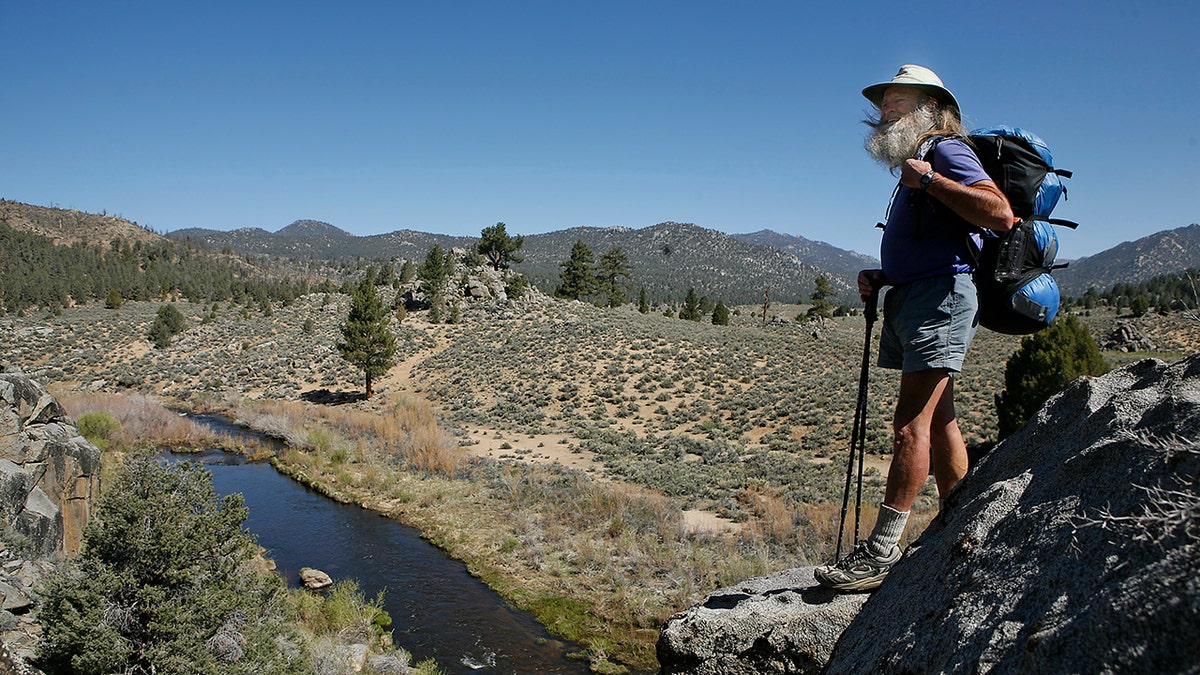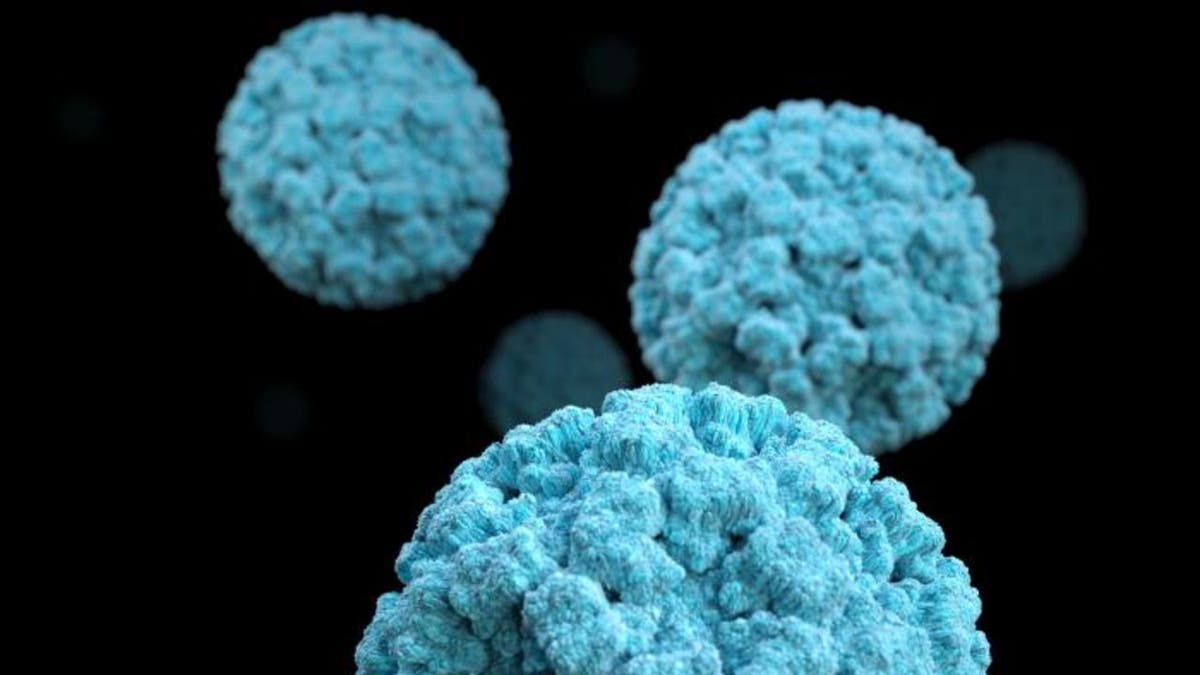The wilderness is full of surprise critters of all shapes and sizes — and last summer, hikers along the Washington Pacific Crest Trail discovered something they were not expecting as they communed with nature: They came into contact with a gastrointestinal illness presumed to be norovirus.
"The Pacific Crest Trail Association (PCTA) is routinely made aware of potential outbreaks of norovirus and other contagious diseases as they affect hikers and trail users," a spokesperson for PCTA told Fox News Digital, in a statement.
"We hear about it from a variety of sources — social media tags, official health reports, first- or secondhand from hikers, etc."
CRUISES SEE SURGE OF NOROVIRUS, HIGHEST IN DECADE: CDC
The trail, popularized by the 2014 film "Wild," attracts people from all over the world.
They arrive to hike the entire 2,560 miles that spans five major mountainous ranges from the U.S. border with Mexico to Canada in one attempt.
But most hikers enjoy sections of the trail through long distance hikes, weekend or day excursions, equestrian rides or connecting with other passions such as photography, birding, fishing, hunting, skiing, snowshoeing and painting, PTCA told Fox News Digital.

A hiker stands on a rock ledge overlooking the south fork of the Kern River on Pacific Crest Trail in May 2008 in the Southern Sierra Nevada range. (Brian Vander Brug/Los Angeles Times via Getty Images)
The Centers for Disease Control and Prevention (CDC) published an investigation earlier this month in Morbidity and Mortality Weekly Report that found at least 27 reports of acute gastroenteritis among hikers along the trail that was presumed to be norovirus, based on their common epidemiologic characteristics.
"Norovirus is a common infection that often causes nausea, vomiting and diarrhea," Dr. Avinash Ketwaroo, gastroenterologist and associate professor of medicine at Yale School of Medicine in Connecticut, told Fox News Digital.
"Norovirus is often referred to as the ‘stomach flu’ because it causes inflammation of the stomach or intestines."
"It is highly contagious, leading to outbreaks in cruise ships, at restaurants, weddings and even health care facilities."
Disease detective investigates
Toward the end of August 2022, a volunteer first alerted health authorities after a large group of sick hikers passed through the Washington Alpine Club Lodge near Snoqualmie Pass in Washington.
Enter "disease detective" Arran Hamlet, PhD, a CDC epidemic intelligence service officer, who was assigned to the case at the Washington State Department of Health.

Based on electron microscopic (EM) imagery, this illustration provides a three-dimensional (3D), graphical representation of a number of norovirus virions, set against a black background. (CDC/Jessica A. Allen)
"We called the volunteer to find out more information, and they also told us they had heard of other sick hikers over the previous month," Hamlet told Fox News Digital.
"This led us to search social media websites such as Facebook and Reddit."
They found numerous reports of stomach illnesses over the previous two months among Pacific Crest Trail hikers in Washington after conducting a survey.
Almost all hikers in the survey – 95% — started to become ill within a 73-mile stretch of the Pacific Crest Trail in Washington.
"We found norovirus in the two stool samples we were able to obtain from recently sick hikers, but we did not find any norovirus during any of our environmental sampling," Hamlet told Fox News Digital.
Norovirus is often referred to as the "stomach flu" because it causes inflammation of the stomach or intestines, according to the CDC.
Nausea, vomiting, diarrhea
Approximately three out of every four survey respondents noted having the stomach illness for a short time — a medium of 2.5 days, the CDC report said.
Approximately 80% of those who developed symptoms reported fatigue, vomiting and diarrhea.
Almost all hikers in the survey – 95% — started to become ill within a 73-mile stretch of the Pacific Crest Trail in Washington, which suggested a possible environmental exposure.

Three hikers are shown on the Pacific Crest Trail last spring. Approximately three out of every four survey respondents noted having the stomach illness for a short time — a medium of 2.5 days, the CDC report said. (Mario Tama/Getty Images)
People generally become sick 12-48 hours after exposure to the virus, which is referred to as the "incubation period," per the CDC.
The investigators subtracted the likely distance the infected hikers walked before they developed symptoms, based on their incubation period, from the locations where they first became ill.
This established the area where the hikers were likely exposed.
Latrines, cabin surfaces ‘amplified transmission’
On Oct. 3-4, 2022, samples were collected for norovirus from high-touch surfaces on two pit latrines, a rest-stop cabin and a stream with drinking water, where likely many of the ill hikers used.
Norovirus was not detected on any of the environmental samples but the combination of the hikers’ symptoms typical of Norovirus, the environmental laboratory results and epidemiologic links all supported the outbreak was primarily caused by norovirus, the report said.
"We did find human fecal contamination on the surfaces of the cabin and latrines that we sampled," Hamlet told Fox News Digital.
"Hikers may have been getting sick by touching surfaces such as doors and tables that had also been touched by someone with norovirus."

Social media reports likely suggest the real number of hikers who were sick were "substantially larger" than the 27 reports. People generally get better within one to three days after being infected, although people can still spread the sickness for several days after getting better, according to the CDC. (iStock)
Exposure to the cabin’s contaminated surfaces and latrines "likely amplified transmission," the report added.
"The norovirus particles can survive on surfaces for weeks and are resistant to typical cleaners, leading to ease of transmission," Ketwaroo told Fox News Digital.
Social media reports suggest likely the real number of hikers who were sick from the outbreak were "substantially larger" than the 27 reports.
CLICK HERE TO SIGN UP FOR OUR LIFESTYLE NEWSLETTER
People generally get better within one to three days after being infected, though they can continue to spread the virus for several days after getting better, according to the CDC.
Wash hands when hiking
It’s not easy to prevent norovirus in remote areas because of the lack of easy access to soap and clean water for handwashing — and the lack of ease in disinfecting shared surfaces in cabin and restrooms.

"The best way to prevent getting sick while hiking is to wash your hands with biodegradable soap and water after using the bathroom and before eating." (iStock)
"The best way to prevent getting sick while hiking is to wash your hands with biodegradable soap and water after using the bathroom and before eating," Hamlet said.
Alcohol-based hand sanitizers, which are commonly used among hikers, are not effective against norovirus, Hamlet reminded people.
PCTA recommends boiling or chemically treating water when concerned about norovirus, as most filters do not remove viruses — although they can be used in combination with chemical disinfection.
The association reminds people to always seek medical treatment right away if they become dehydrated or the illness lasts more than several days.
CLICK HERE TO GET THE FOX NEWS APP
More information about suggested practices for good hygiene and methods to avoid communicable disease while on the trail can be found on PTCA’s website, pcta.org.
For more Lifestyle articles, visit www.foxnews.com/lifestyle.






















